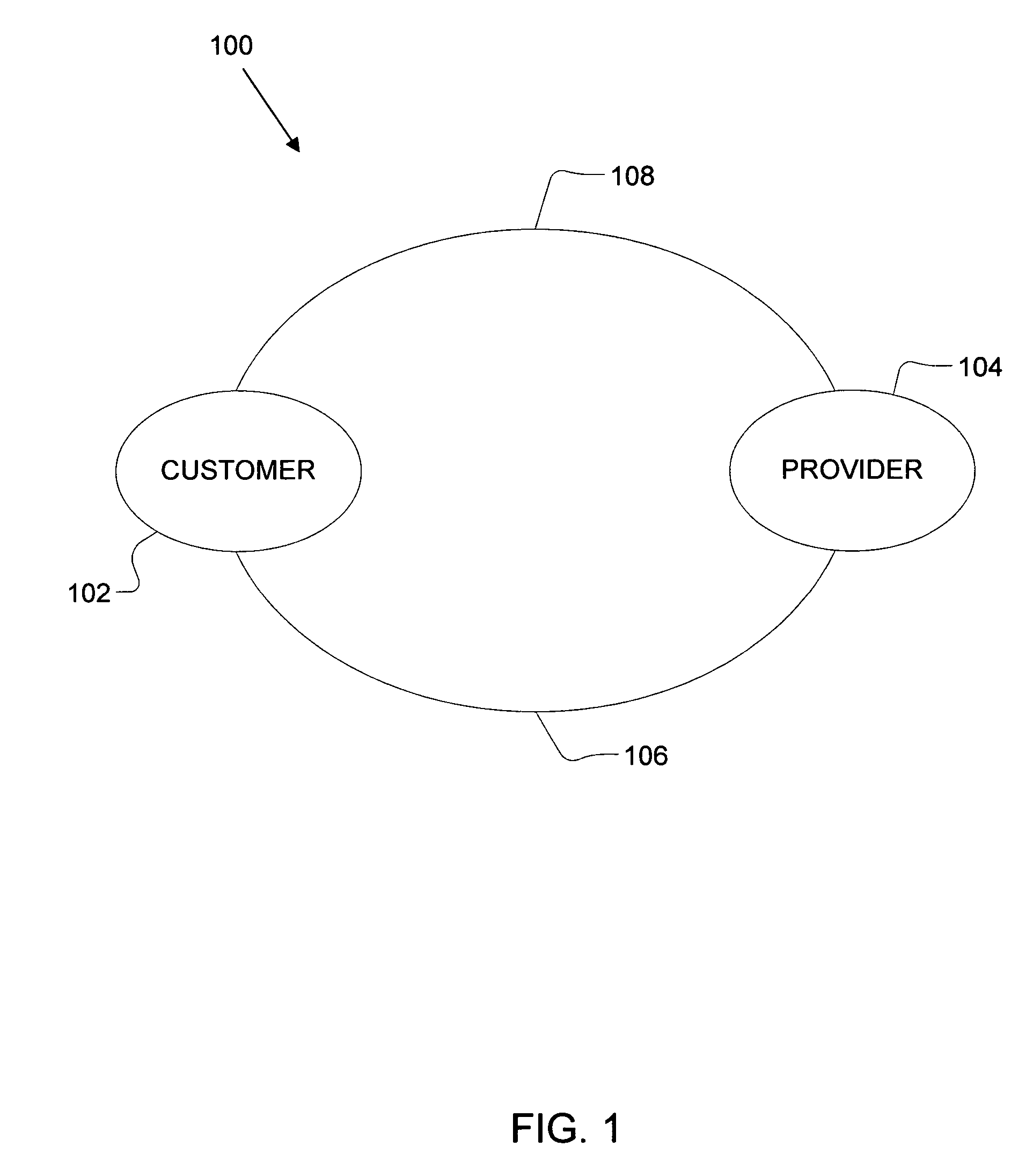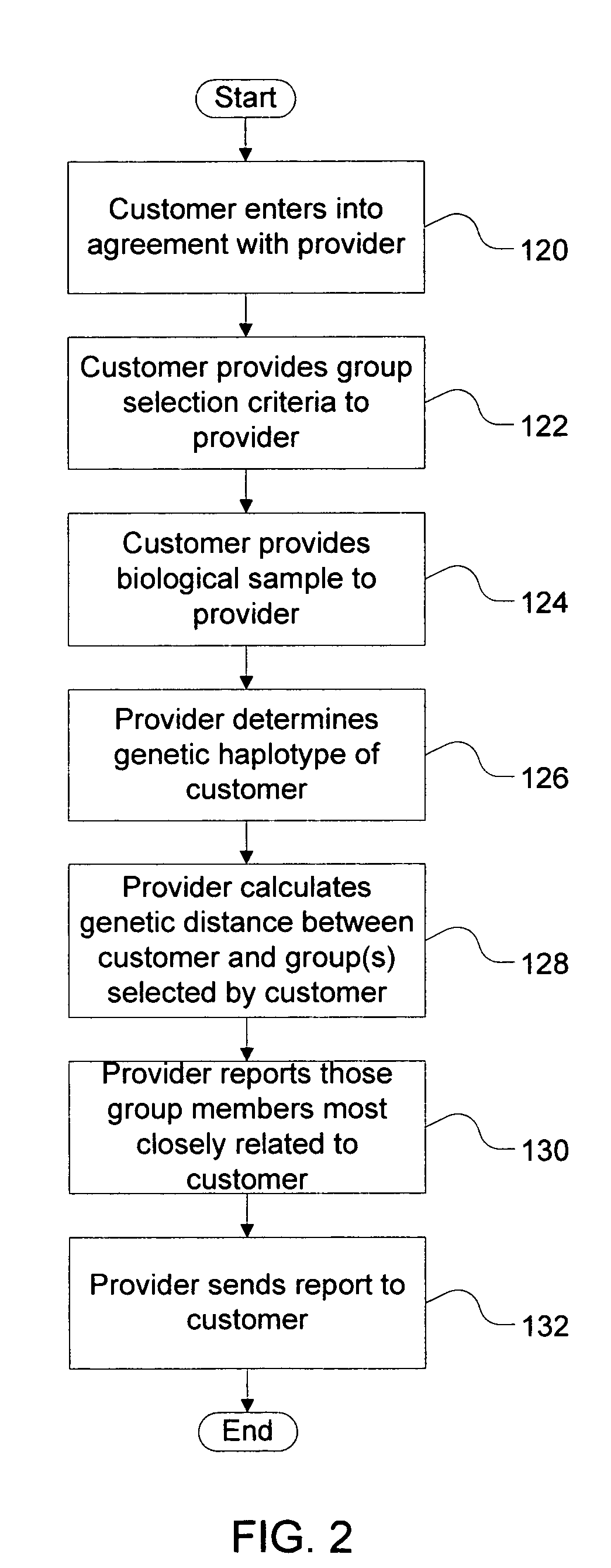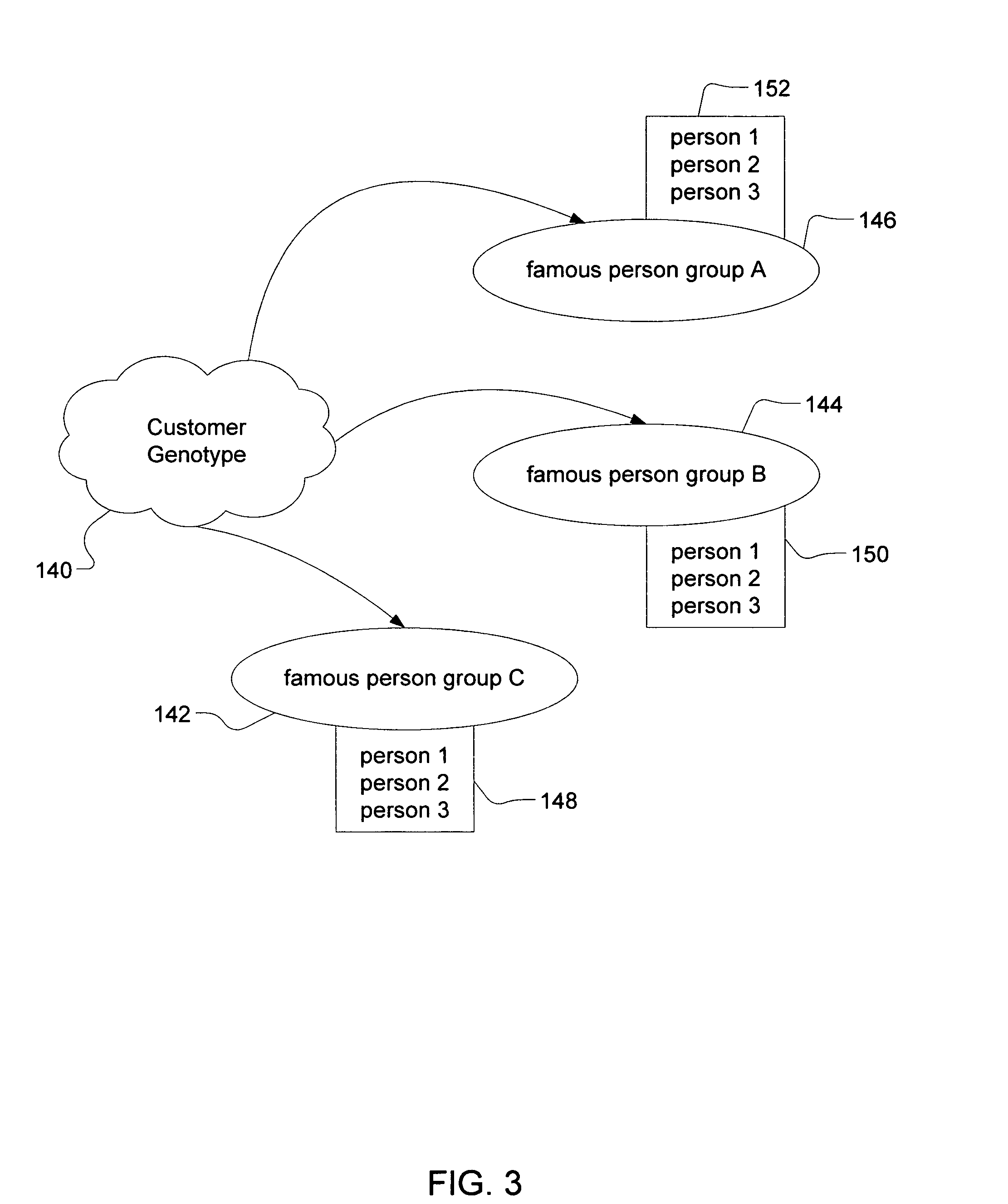Method of determining a genetic relationship to at least one individual in a group of famous individuals using a combination of genetic markers
a technology of genetic relationship and combination, applied in the field of genealogical research, can solve the problems of virtually impossible to determine from which pedigree the individual descends, and it is impossible to determine to what degree an individual is related to a random or specific second individual or group of individuals
- Summary
- Abstract
- Description
- Claims
- Application Information
AI Technical Summary
Benefits of technology
Problems solved by technology
Method used
Image
Examples
example
Example of Allege-Sharing Distance Algorithm
[0063]FIG. 4 is a table of example genotypes of three unrelated Canadians, individual A 200, B 202, and C 204 using the Profiler system (from Police database online). There are nine microsatellite markers 206-222, each with two copies or alleles per individual, the paternal (p) and maternal (m). The actual genotypes in the array consist of the numbers of repeats of the base unit at each microsatellite marker.
[0064] The number of alleles shared between the two individuals is first counted. Individuals can share 0, 1 or 2 alleles at a given marker. In this example the overall number shared can thus range from 0 to 18. For these three, A 200 and B 202 share 7, A 200 and C 204 share 4 and B 202 and C 204 share only 1 allele. For comparison with other data sets which may have different numbers of markers, the proportion of shared alleles is then calculated, so A 200 and B 202 share 7 / 18=0.39, A 200 and C 204=0.22 and B 202 and C 204=0.06. Fin...
PUM
 Login to View More
Login to View More Abstract
Description
Claims
Application Information
 Login to View More
Login to View More - R&D
- Intellectual Property
- Life Sciences
- Materials
- Tech Scout
- Unparalleled Data Quality
- Higher Quality Content
- 60% Fewer Hallucinations
Browse by: Latest US Patents, China's latest patents, Technical Efficacy Thesaurus, Application Domain, Technology Topic, Popular Technical Reports.
© 2025 PatSnap. All rights reserved.Legal|Privacy policy|Modern Slavery Act Transparency Statement|Sitemap|About US| Contact US: help@patsnap.com



